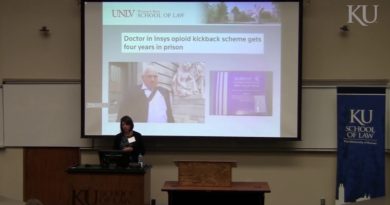Maternity Wing Closures: Insights and Impacts in the U.S. South
In recent years, the number of maternity wings in the U.S. has been increasing at an alarming rate. Since 2018, about 300 maternity wings closed their doors. This has left communities with fewer choices for prenatal, delivery, or postpartum care. The “maternity desert” is a term used to describe areas where there is no access to maternity services. Nationwide, 2 million birthing women live in maternity deserts and another 3.5 millions live in counties that have only one hospital or birth center providing obstetrics care. In the South, the lack of maternity care has led to some of the highest rates nationwide of pregnancy-related deaths that could have been prevented. The inconsistent policies of the region, especially in relation to abortion and Medicaid, further limit access to essential care. Hospitals also expressed concerns over inadequate reimbursements from Medicaid, which finances 41% of U.S. births. In some hospitals, neonatal intensive-care units (NICUs), which are more lucrative, help offset the financial losses caused by Medicaid births. Many hospitals, particularly rural hospitals, do not have NICUs. The financial pressures that have been accumulating in hospitals have forced them to close their maternity wing, sometimes to keep the rest open. This is a further exodus from states that have limited abortions post-Dobbs. These abortion bans have a particularly high prevalence in the South where there were already many maternity care deserts before Dobbs. The hostile political climate and lack of employment opportunities have further perpetuated provider shortages. This has made this vital care increasingly inaccessible to many. These women are not only denied abortions but are also often unable to access prenatal care if they are forced into keeping their pregnancies. This group of women is said to live in “double deserts”. Approximately 3.7 millions birthing people live in double deserts in the U.S., with the highest concentration in the South. This has had a devastating effect on communities and resulted in more preterm deliveries. The link between abortion care, maternity care, and infant care is obvious. Few policymakers have supported efforts that would expand the social safety network through programs such as Temporary Aid for Needy Families in order to financially support new mothers and fathers after eliminating abortion access. However, these efforts are largely futile. Further, these efforts do not address the specific needs of those who now live in double deserts.
Maternity wing closures also create several pressing health equity concerns. Many women who are giving birth have no choice but drive more than 40 minutes to get to maternity care due to the shortage of providers and facilities. Some pregnant women are temporarily moving to be closer to the maternity provider. Temporary relocation is something that not everyone can afford. Geographic isolation from comprehensive health care increases the risk for complications and death. Many low-income women who are pregnant do not have the financial or reliable resources to travel long distances. She was not alone. She is not the only one.[2]These closings have also disproportionately affected Black, Indigenous and other People of Color birthing people who often experience adverse outcomes, including deaths, due to inadequate prenatal care, racism, chronic stress caused by discrimination and racism. This is particularly true in the South. The CDC reported that Black women who give birth are almost three times as likely to die of pregnancy-related causes as their white counterparts. The White House has launched a response to the health equity crisis. However, efforts to address maternity deserts have largely ignored Black, rural and Southern birthing women. Policymakers need to be more intentional in addressing maternity deserts using an intersectional lens. This means taking into account the many ways that a birthing woman may be affected by lack of access maternity care. This framework would force policymakers not only to consider gender and geography but also ethnicity, income and other factors to address this crisis more holistically. These closures perpetuate inequalities among birthing people, and negatively impact the already dismal birth results nationwide. This is particularly true in the Southern states, where not only are maternity care deserts prevalent but also abortion bans that further restrict access to care. Cheyenne Peters was a legal assistant at the National Health Law Program during summer 2024. She is currently a third-year law student at the University of Tennessee College of Law.
NHeLP aims to use gender inclusive terminology to accurately reflect people with varying pregnancy care needs and experiences. We use “maternity care” when it is necessary to accurately refer to legal terms or cisgender research on women and to honor the way advocates or groups identify themselves. We need more inclusive policy language and research to better serve the needs of all women who need equitable pregnancy care.






